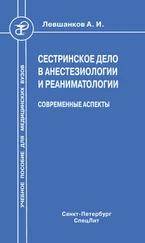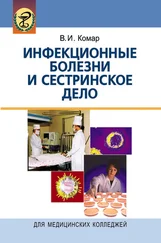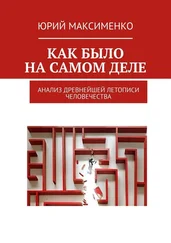Roy, C. (1970). Adaptation: A conceptual framework for nursing. Nursing Outlook, 18(3): 42–45.
Roy, S.C. (1982b). Historical Perspective of the Theoretical Framework for the Classification of Nursing Diagnosis. I: Kim, M.J.; Moritz, D.A.: Classification of Nursing Diagnoses. Proceedings of the Third and Fourth National Conferences. New York: McGraw-Hill, s. 235–246.
Roy, S.C. (1984). Framework for classification systems development: progress and issues. I: Kim, M.J.; McFarland, G.K.; McLane, A.M. (red.) Classification of Nursing Diagnoses. Proceedings of the Fifth National Conference. St. Louis: CV Mosby, s. 26–40.
Saba, V.K. (1991). The International Classification od Diseases (ICD): Classification of Nursing Diagnosis. I: Carroll-Johnson, R.M.: Classification of Nursing Diagnoses. Proceedings of the Ninth Conference. North American Nursing Diagnosis Association. Philadelphia: JB Lippincott, s. 14–18.
Sarvimäki, A. (1988). Knowledge in Interactive disciplines. (Research bulletin No. 68). Helsinki, Finland: University of Helsinki, Department of Education.
Scheel, M.E. (1994). Interaktionel sygeplejepraksis. Videnskap – etik og sygepleje. K0benhavn: Munksgaard.
Scheel, M. (1985). Vidensgrundlag – etik og sygepleje. K0benhavn: Munksgaard.
Scheel, M. (1990). Nel Noddings omsorgsetik. Et alternativ til pligtetik og nyttemoral. I: Jensen, T.; Jensen, L.U.; Kim, W.C. (red.): Grundlagsproblemer i sygeplejen – Etik, videnskabsteori, ledelse <&samfund. Ärhus: Philosophia.
Schlotfeldt, R. (1971). The significance of empirical research. Nursing Research, 20(2): 140–142.
Schön, D.A. (1983). The reflective practitioner: how professionals think in action. New York, NY Basic Books.
Schön, D.A. (1987). Educating the reflective practitioner: toward a new design for teaching and learning in the professions. San Francisco, CA: Jossey-Bass.
Sheppard, K.C. (1991). Altered protection. I Carroll-Johnson, R.M. (red.): Classification of Nursing Diagnoses: Proceedings of the Ninth Conference. North American Nursing Diagnosis Association. Philadelphia, PA: JB Lippincott.
Skretkowicz, V. (1992). Introduction. I: Nightingale, F. Notes on Nursing. (Revised, with additions). London: Scutari Press.
Skretkowicz, V. (1997). Historien om utviklingen og utgivelsen av “Notater om sykepleie”. I: Nightingale, F. (1997). Notater om sykepleie. Samlede utgaver. Oslo: Universitetsforlaget, ss. 212–240.
Skretkowicz, V. (1997). Introduksjon. I: Nightingale, F: (1997). Notater om sykepleie. Samlede utgaver. Oslo: Universitetsforlaget.
Smith, M.C. (1990). Pattern in nursing practice. Nursing Science Quarterly, 3: 57–59.
Sommerseth, E.; Holter, I.M.; 0ren, J. P.; Schwitsch, M.S. (1978). Debatten m äkomme nä! Sykepleien, 65(4): 198–200.
Stevens, B. (1979). Nursing Theory Analysis, Application, Evaluation. Boston, CT: Little Brown.
St0vring, T. (1982). Hvorfor sykepleieteori? Sykepleien, 69(16): 16–17, 19.
Sveinbjarnardottir, E.; de Casterle, B.D. (1997). Mental illness in the family: an emotional experience. Issues in Mental Health Nursing. 18(1): 45–56.
Saether, M. (1983). Sykepleieteori – en umulig vei е gе. Sykepleien, 70(5): 22.
Taylor, R.L.; Watson, J. (1989). They shall not hurt: human suffering and human caring. Boulder, CO: Colorado Associated University Press.
Taylor, S.G. (1989). An interpretation of family within Orem’s general theory of nursing. Nursing Science Quarterly2(5): 131–137.
Thompson, J.L. (1992). Identity politics, essentialism, and constructions of “home” in nursing. I Critique, resistance, and action: working papers in the politics of nursing. New York, NY: National League for Nursing Publications.
Thompson, J.L. (1985). Practical discourse in nursing: Going beyond empiricism and historicism. Advances in Nursing Science, 7(4): 59–71.
Torres, G.; Yura, H. (1974). Today’s conceptual framework: Its relationship to the curriculum development process. New York: National League for Nursing.
Travelbee, J. (1966). Interpersonal Aspects of Nursing. Philadelphia, Pennsylvania: F.A. Davis.
Travelbee, J. (1971). Interpersonal Aspects of Nursing. 2. utg. Philadelphia, Pennsylvania: F.A. Davis.
Traynor, M. (1997). Postmodern research: no grounding or privilege, just freefloating trouble making. Nursing Inquiry, 4(2): 99-107.
Tunset, A.B.; 0verb0, R. (1984). Brukes sykepleieprosessen i praksis? Sykepleien, 71(4): 6-10, 32.
Tunset, A.B.; 0verb0, R. (1985). Teori og praksis i sykepleien. Er fokus det samme? Sykepleien, 72(4): 11–15, 25.
Utne, I. (1985). B0r gruppesykepleie forkastes til fordel for primaersykepleie? Sykepleien, 72(12): 16–18, 29.
Vaillot, M.C. (1969). Eksistensialismen. En forpliktende filosofi. Sykepleien, 56(6): 115–117, 129. (oversatt av Agnes Vesterhus).
Visintainer, M. (1986). The nature of knowledge and theory in nursing. Image, 18(2): 33
Wald, F.S.; Leonard, R.C. (1964). Towards development of nursing practice theory. Nursing Research, 13(4); 309–313.
Walker, L.; Avant, K.A. (1989). Strategies for theory construction in nursing. 2. utg. Norwalk, CT: Appleton & Lange.
Walker, L.O. (1971). Toward a clearer understanding of the concept of nursing theory. Nursing Research, 20(5): 428–435.
Warren, J.J. (1-991). Implications of Introducing Axes into a Classification System. I: Carroll-Johnson, R.M.: Classification of Nursing Diagnoses. Proceedings of the Ninth Conference. North American Nursing Diagnosis Association. Philadelphia: JB Lippincott, s. 38–44.
Watson, J. (1988). Nursing: human science and human care: a theory of nursing. New York: National League for Nursing.
Watson, J. (1990). Caring knowledge and informed moral passion. Advances in Nursing Science, 13 (1): 15–24.
Watson, J. (1981). Nursing’s scientific quest. Nursing Outlook, 29: 413–416.
Webster, G.A. (1984). Nomenclature and classification system development. I: Kim, M.J.; McFarland, G.K.; McLane, A.M. (red.) Classification of Nursing Diagnoses. Proceedings of the Fifth National Conference. St. Louis: CV Mosby, s. 14–23.
Webster,G.A; Brencick, J.M. (1994). I: Carroll-Johnson, R.M.; Paquette, M. (1994): Nomenclature and Classification Systems: 10 years later. Classification of Nursing Diagnoses. Proceedings of the Tenth Conference. North American Nursing Diagnosis Association. Philadelphia: JB Lippincott, s. 63–69.
Wetlesen, J. (1989). Praktisk kunnskap i sykepleievitenskapen. I Wetlesen Kirkevold: Praktisk kunnskap i Sykepleievitenskap. Publis. serie 31 1989, Institutt for Sykepleievitenskap.
Wiedenbach, E. (1964). Clinical Nursning: A Helping Art. New York: Springer-Verlag.
Winstead-Fry, P. (1990). Visions of Rogers’ science-based nursing. Reflections on death as a process: a response to a study of the experience of dying. NLN publications, nr. 15, s. 229-36.
Woodham-Smith, C. (1982/1950). Florence Nightingale. 1820–1910. London: Constable.
Woods, N.F. (1987). Response: Early morning musings on the passion for substance. Scholarly Inquiry for Nursing Practice, 1(1): 25–28.
PN – Registered nurse, дипломированная медсестра. PhD – Philosophy Doctor – доктор философии.
Читать дальше
Конец ознакомительного отрывка
Купить книгу






![Марьяна Иванова - В чём дело, Полли? [СИ]](/books/386556/maryana-ivanova-v-chem-delo-polli-si-thumb.webp)





